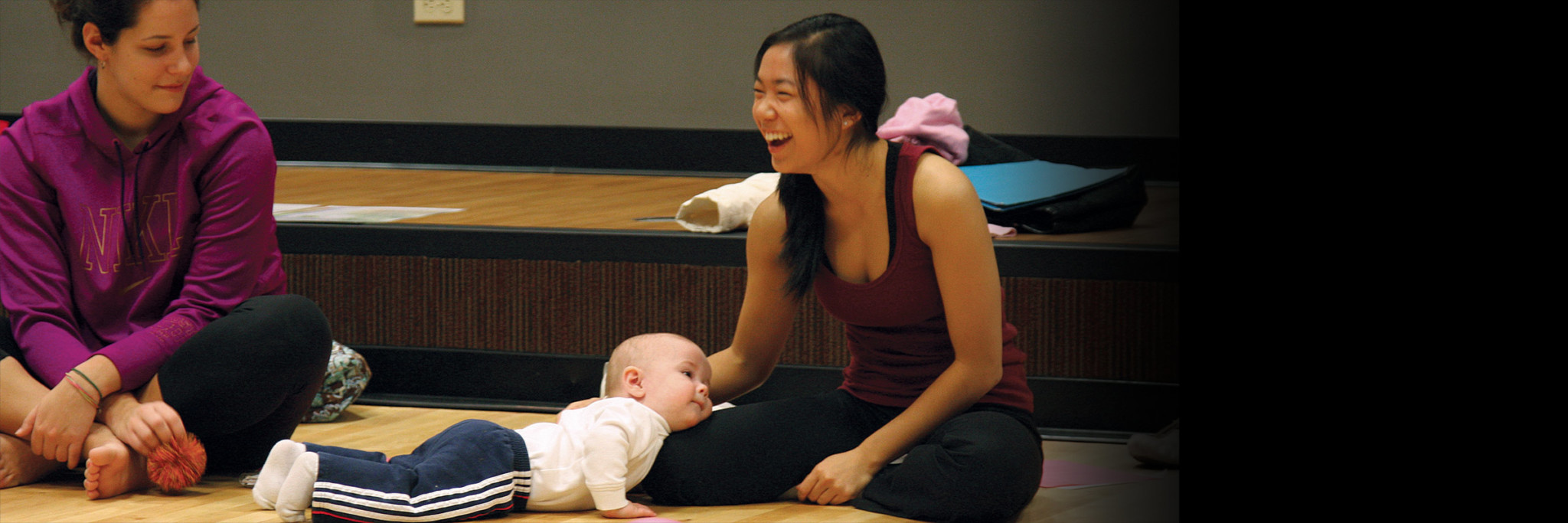I’m sitting in the new performance space in the basement of Knapp Hall, chatting with Gill Wright Miller ’74, associate professor of dance, about movement. In just a few minutes students will stream into the room, ready to learn all about the involuntary movements of infants. I’m here because I happen to know the one-year-old they’ll be using as a subject today: my son, Lucas. Now, Lucas is an enigma to my husband and me. We were spoiled by our first son, Sam, who slept through the night early on and preferred to study the tags on very loud talking toys rather than play with the very loud talking toys themselves. It was all relatively peaceful; then Lucas came along, and things got pretty exciting. Where Sam was books and quiet play, Lucas is pure physical energy barreling from one activity to the next and laughing all the way.
So when Miller asked if she and her students could observe him, I was thrilled. I knew her academic expertise lies in somatics and a branch of that discipline, Body-Mind Centering, which is an approach to understanding one’s body by studying its anatomical systems and developmental movement patterns. Miller’s a pro when it comes to the movement part of BMC, so she has a knack for using body movement to predict behavior. In fact, sometimes she makes predictions about her students’
study habits based on the way they carry themselves. (She writes the predictions on pieces of paper—things like whether or not a student will turn assignments in on time. She seals these predictions in envelopes, and at the end of the semester, students get to see if she’s pegged them correctly. Miller
proclaims a 90 percent success rate.)
In today’s class, Somatics I, about a dozen students sit on the floor in a circle, with notebooks at the ready. They had already observed a four-month-old infant as well as several videos of babies on the move, and now Lucas is at the center of attention—and let’s just say he likes it here. There are exercise balls rolling around here and there, some toys scattered about, and a couple of female students with whom Lucas has developed a rapport.
While he crawls around and plays, the students look for specific movements—things like “negative supporting reflex” (for those who are not experts in somatics, this means that babies who have been bouncing will pull their legs upward on the upswing); “landau righting reaction” (lying on the belly,
with arms and legs out and up—we call this “body surfing” at my house); and extensor thrust reflex (using arms or legs to push away from an object or the ground). At one point Miller picks up the baby, but he stretches his arms to the sky in an attempt to slide out from under her grip. At another point, he takes a ball and begins a game of catch with a student. And when he’s had enough, he heads over to Jo-Jo Tsai ’13, puts his head in her lap, and rests. We’re all laughing at his complete abandon, but he clearly doesn’t care. He’s tired.
When Miller and I catch up for coffee a few weeks later, I ask her to tell me about Lucas’ personality. I implore her to do the “envelope experiment” with him because my husband and I are quite sure that he’s going to be the son we’ll need to pin down to do his homework. We also have a few other theories
about Lucas, our little Prince Harry. We’re guessing that he’ll be the brother who worries less about consequences; that he’ll be more of a fun-loving comic; that he’ll get bored easily. Miller puts it to me this way: “He knows what he wants and isn’t afraid to let you know it.” But will he turn in his assignments on time? “No,” she says, apologetically. “No. He won’t.”
I knew it. And hey Lucas, I’m on to you.

